Chinese Crested Dog Breed: Essential Guide to Traits & Care
The Chinese Crested is a small dog breed known for its unique look and affectionate nature. It comes in two main types: one with soft, smooth skin and hair in certain areas, and another covered in a full coat of long fur. This breed is a loving companion that needs plenty of attention and care to thrive.
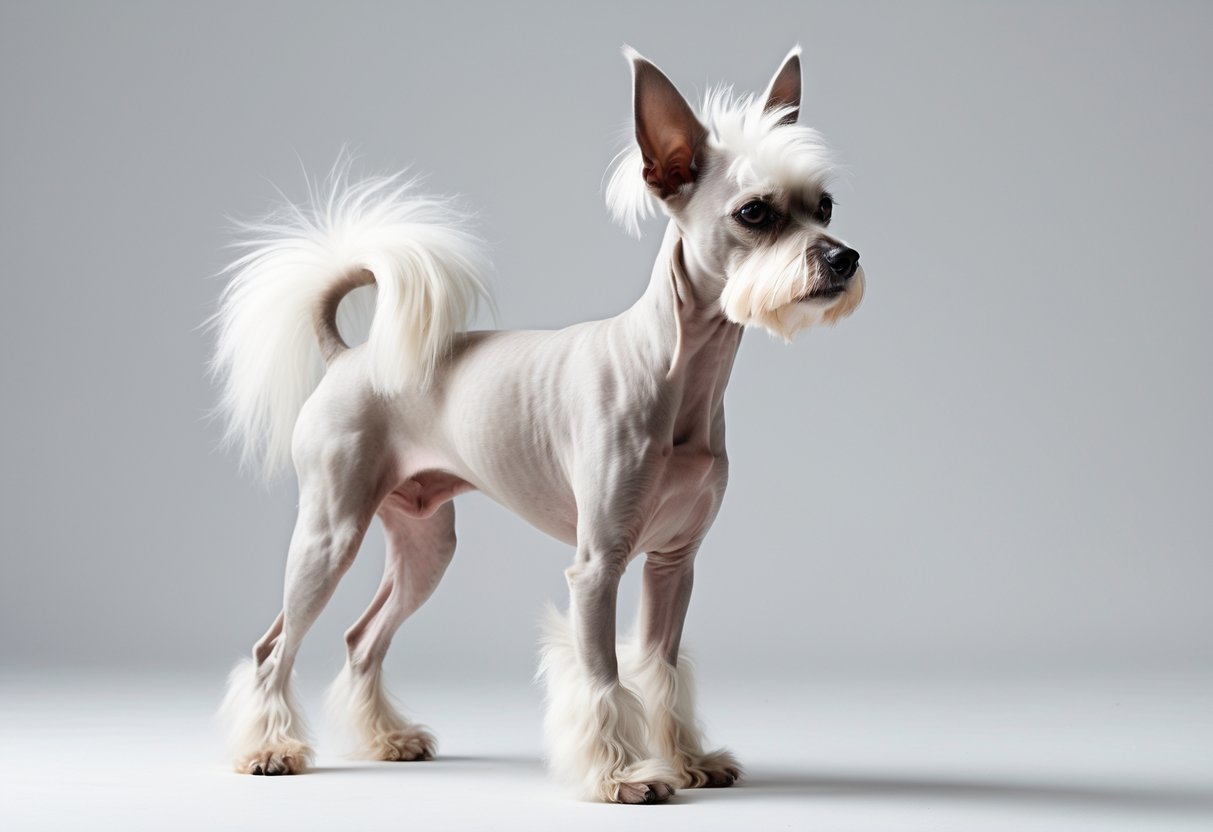
They are gentle, playful, and enjoy being close to their owners. Despite their delicate appearance, Chinese Cresteds can adapt well to different living spaces, making them a good choice for many households. Their care requires regular grooming and skin protection, especially for the hairless variety.
Their size is small, usually weighing between 8 and 12 pounds. This makes them easy to manage, but they do need early socialization and gentle training to develop good behavior. Understanding these traits can help potential owners decide if the Chinese Crested fits their lifestyle.
Key Takeways
- The Chinese Crested is a small, affectionate dog breed with two coat types.
- They need regular grooming and skin care, especially if hairless.
- Early socialization and attention are important for their well-being.
Understanding the Chinese Crested Dog Breed
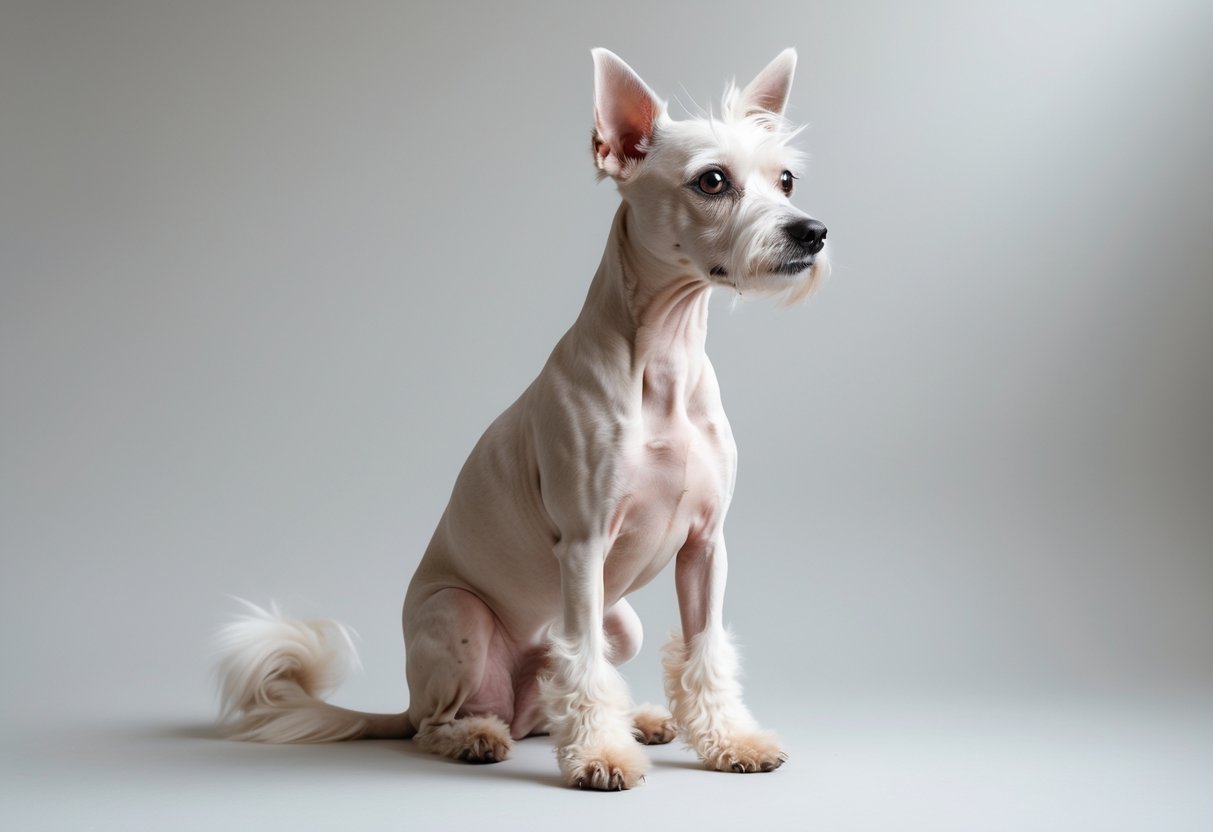
The Chinese Crested is a small, unique dog known for its unusual look and lively personality. It has two main coat types that influence its care needs and appearance. The breed’s history is interesting and shows how it developed through careful breeding over time.
Breed Overview
The Chinese Crested is a toy breed standing about 11 to 13 inches tall and weighing between 8 and 12 pounds. It is known for being affectionate, playful, and social. This dog loves attention and often bonds closely with its owners.
The breed is also smart and can be trained easily. It adapts well to living in small homes or apartments. Because of its size, it is best suited to families or individuals who can provide gentle care and companionship. The breed has a friendly nature but can be shy around strangers.
Origin and Development
The Chinese Crested’s origin dates back many centuries. It likely originated from hairless dogs that came from African regions to China. Over time, Chinese breeders bred these dogs to be smaller and more refined.
These dogs were popular as companion animals in China and eventually spread worldwide. The Chinese Crested’s history is full of stories of their unique looks and charm, making them stand out among toy breeds.
Types: Hairless and Powderpuff
The breed has two main varieties: the Hairless and the Powderpuff. The Hairless Chinese Crested has smooth, soft skin with hair only on the head (known as the crest), tail, and feet. This variety requires careful skincare to avoid dryness or irritation.
The Powderpuff variety has a full coat of soft, long hair that covers the body completely. It needs regular grooming to prevent mats and tangles. Both types share the same friendly personality and size but have different care routines due to their coats.
| Feature | Hairless Chinese Crested | Powderpuff Chinese Crested |
|---|---|---|
| Coat Type | Mostly hairless with hair on head, tail, feet | Full coat of long, soft hair |
| Skin Care | Needs protection and moisturizing | Regular brushing required |
| Appearance | Sleek, unique skin and crest | Fluffy and soft look |
| Grooming Needs | Moderate, focus on skin health | High, regular grooming necessary |
Physical Characteristics
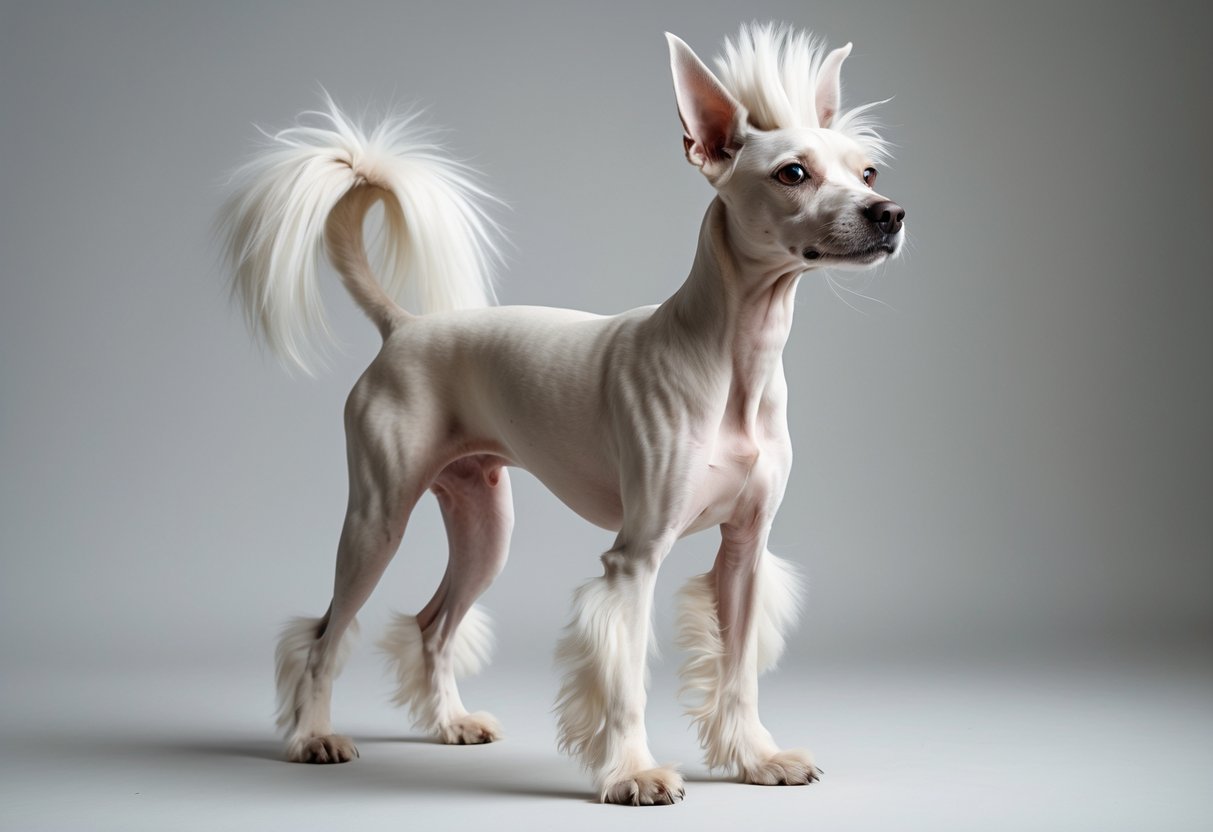
The Chinese Crested dog has a distinct look that sets it apart from other small dogs. Its size, unique features, and color variations create its unusual and easily recognizable appearance.
Size and Weight
The Chinese Crested is a small dog breed. It typically weighs between 8 to 13 pounds (3.6 to 6 kg). Its height usually ranges from 11 to 13 inches (28 to 33 cm) at the shoulder. This makes it a lightweight and compact dog.
Its slender body is well-proportioned, giving it an elegant but delicate frame. Despite the small size, it has a strong and agile build. This size makes the Chinese Crested suitable for apartment living or homes with limited space.
Unique Features
The Chinese Crested is best known for two coat varieties: Hairless and Powderpuff. The Hairless variety has exposed skin with soft tufts of fur on the head (called a crest), tail, and feet. The Powderpuff has a full, soft, silky coat covering the entire body.
This breed has a wedge-shaped head with large, erect ears and dark, almond-shaped eyes. Its feet are often described as “cat-like,” adding to its delicate look. The skin on the Hairless variety may be spotted pink or black.
Color Variations
The Chinese Crested dog comes in a wide range of colors and patterns. Both coat types can show various colors such as white, black, gray, brown, red, and spotted mixes of these.
The Hairless type’s visible skin may feature mottled or spotted patterns. Meanwhile, the Powderpuff coat often shows solid colors or mixed shades. These color variations contribute to the breed’s unique and charming look.
Temperament and Personality
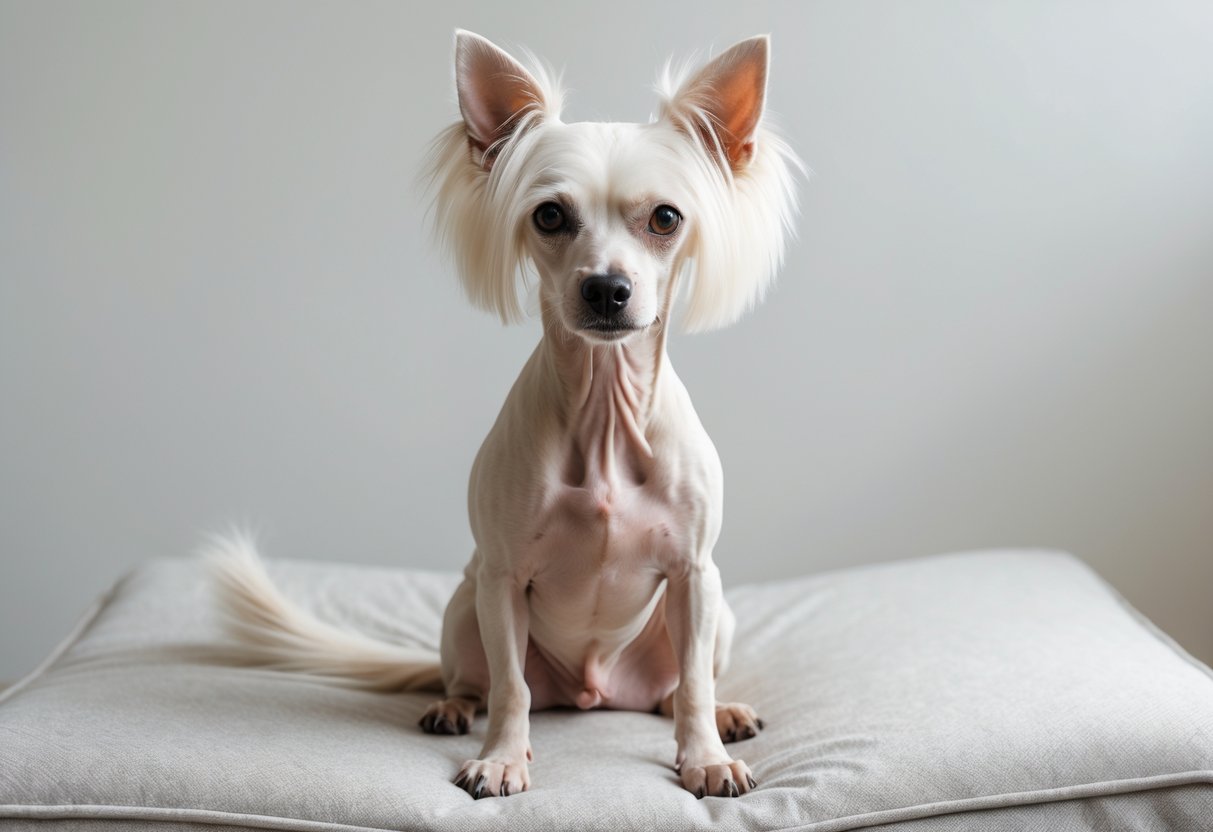
The Chinese Crested dog is known for being affectionate and gentle. It forms strong bonds with its owner and shows playful energy. This breed is sensitive to its surroundings and the tone of voice used by people, responding best to patient and kind handling.
Companion Traits
Chinese Crested dogs are often called “Velcro dogs” because they like to stay very close to their owners. They show care through gentle actions such as using their paws to hug. These dogs are happiest when they receive plenty of attention and affection.
Despite their sweet nature, they can be sensitive and easily hurt by harsh words. Positive reinforcement, such as praise or treats, works best for training. A Chinese Crested’s happiness often depends on the trust and connection it shares with its owner.
Interaction with Families
This breed does well in families with older children who understand how to interact gently. Young children might accidentally injure them, and the dogs can get jealous if they feel ignored. Because of this, families with very young kids might want to consider another breed.
Chinese Crested dogs enjoy playing and being part of family activities. They behave well when trained and socialized early, but their barking can be frequent. Early training can help manage when barking is appropriate.
Behavior with Other Pets
Chinese Crested dogs are generally playful and get along well with other pets. They enjoy social interaction and mental challenges like puzzle toys. Their energy helps them stay engaged when playing with other animals.
However, they can be protective and alert, barking at new things or strangers. Proper socialization from a young age helps them accept new pets and people without fear or aggression. They thrive in homes where they are part of a social group rather than left alone.
Health Concerns

The Chinese Crested dog can face specific health challenges that require attention from owners. These include genetic conditions, eye diseases, and dental problems that can affect their quality of life.
Common Medical Conditions
Chinese Cresteds are prone to several health issues common in small dog breeds. One key concern is patellar luxation, where the kneecap slips out of place. This can cause lameness and pain, making walking difficult.
Another serious condition is Canine Multiple System Degeneration (CMSD), a rare genetic disorder affecting movement and coordination. Symptoms start between 8 months and 2 years, including tremors and an awkward gait. It worsens over time and requires supportive care.
The breed can also suffer from skin problems due to the hairless variety’s lack of fur. They are prone to dryness, acne, and sunburn. Protecting their skin with proper grooming and sun protection is important to prevent infections and discomfort.
Progressive Retinal Atrophy Risk
Progressive Retinal Atrophy (PRA) is a genetic eye disease that affects Chinese Cresteds. It causes the retina to deteriorate slowly, leading to vision loss and eventual blindness.
Owners might notice symptoms such as:
- Difficulty seeing in low light
- Bumping into furniture
- Excessive eye rubbing
Regular vet eye check-ups help catch PRA early. There is no cure, but managing symptoms and adjusting the dog’s environment can help maintain their quality of life as the disease progresses.
Dental Health Issues
Dental problems are common in Chinese Cresteds, especially the hairless variety. They often have fewer or misaligned teeth, which can lead to overcrowding and periodontal disease.
Signs to watch for include:
- Bad breath
- Drooling
- Inflamed gums
- Difficulty eating
Regular tooth brushing and professional dental cleanings are essential. Maintaining oral health can prevent pain, tooth loss, and infections that affect the dog’s overall well-being.
Care and Grooming Needs
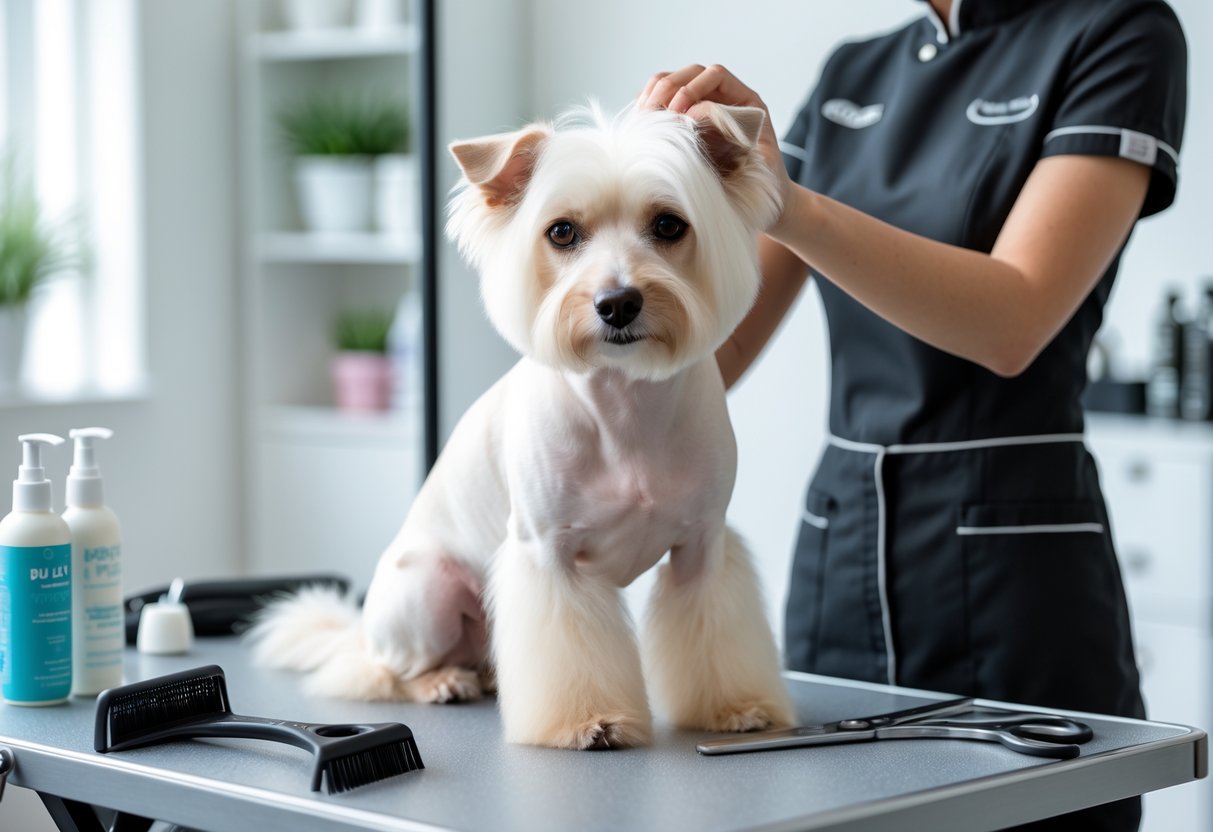
The Chinese Crested requires careful attention to grooming and health based on its type. Regular cleaning, protective skin care, and exercise customized to its needs support its well-being. Nutrition plays a key role in maintaining energy and coat condition.
Skin Care for Hairless Variety
The hairless Chinese Crested has exposed skin prone to dryness and sunburn. Their skin needs frequent moisturizing with vet-approved lotions to prevent cracking.
Sunscreen made for dogs should be applied before any outdoor activity to avoid sun damage. Regular bathing, about once a week, helps prevent acne and skin irritation but should use gentle, dog-safe shampoo.
Owners should watch for signs of irritation or infection and consult a vet if problems arise. Keeping the skin clean and protected is essential for this variety’s health.
Grooming the Powderpuff
The Powderpuff has a soft double coat that needs regular brushing to avoid matting and tangles. Brushing several times a week using a slicker brush and comb keeps the fur smooth and free of knots.
Bathing every 2 to 3 weeks is usually enough unless the dog gets dirty more often. Trimming nails every 2 to 3 weeks prevents discomfort. Ear and eye cleaning also help avoid infections.
Professional grooming every 6 to 8 weeks supports coat care and skin health for the Powderpuff, especially if the owner cannot maintain the coat easily at home.
Nutrition and Exercise
A balanced diet rich in high-quality protein supports muscle and coat health. Feeding according to age, size, and activity level helps maintain a healthy weight.
Chinese Cresteds benefit from short daily walks and play sessions to burn energy but avoid excessive exercise due to their small size. Mental stimulation through toys and gentle training also supports their well-being.
Owners should monitor their dog’s weight and energy level and adjust food or activity to keep them fit and healthy.
Training and Socialization
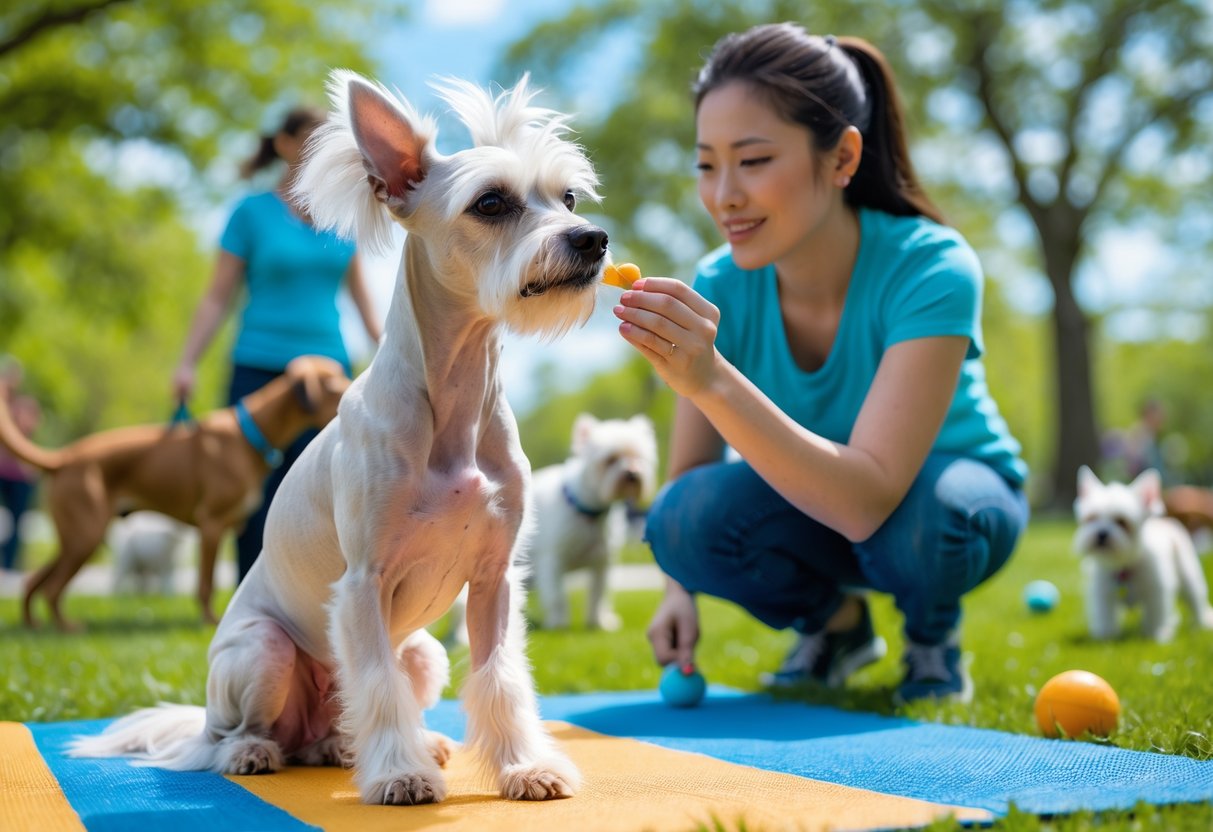
The Chinese Crested dog needs focused training and careful socialization to become well-behaved and confident. Training should begin early, be consistent, and use positive reinforcement. Socialization helps the dog adapt to different environments, people, and other animals, which reduces fear and behavioral issues.
Trainability and Intelligence
The Chinese Crested is smart and eager to learn but can be sensitive. It responds best to gentle, positive training methods rather than harsh corrections. Early training with clear commands like “sit,” “stay,” and “come” helps set good behavior.
Consistency is important. All family members should use the same commands and rewards to avoid confusing the dog. Training sessions should be short and frequent to hold its attention. This breed thrives on praise, treats, and play as rewards.
Mental stimulation through training also prevents boredom, which can lead to destructive behavior. Although some Chinese Cresteds may be stubborn, patience and positive reinforcement make training successful.
Tips for Early Socialization
Early socialization is critical for a Chinese Crested puppy’s development. It needs exposure to different people, other animals, and various environments to build confidence.
Start with calm settings and gradually introduce busier places like parks or streets. Supervised playdates with friendly dogs help the puppy learn how to interact properly. Meeting people of all ages reduces fear and encourages friendliness.
Pay attention to the puppy’s reactions and avoid overwhelming it. Gentle, positive experiences with praise and treats strengthen good social habits. Avoid forcing exposure to scary situations, which can cause stress.
Balanced socialization helps prevent aggression and anxiety, making the dog adaptable and comfortable in diverse situations.
Living with a Chinese Crested
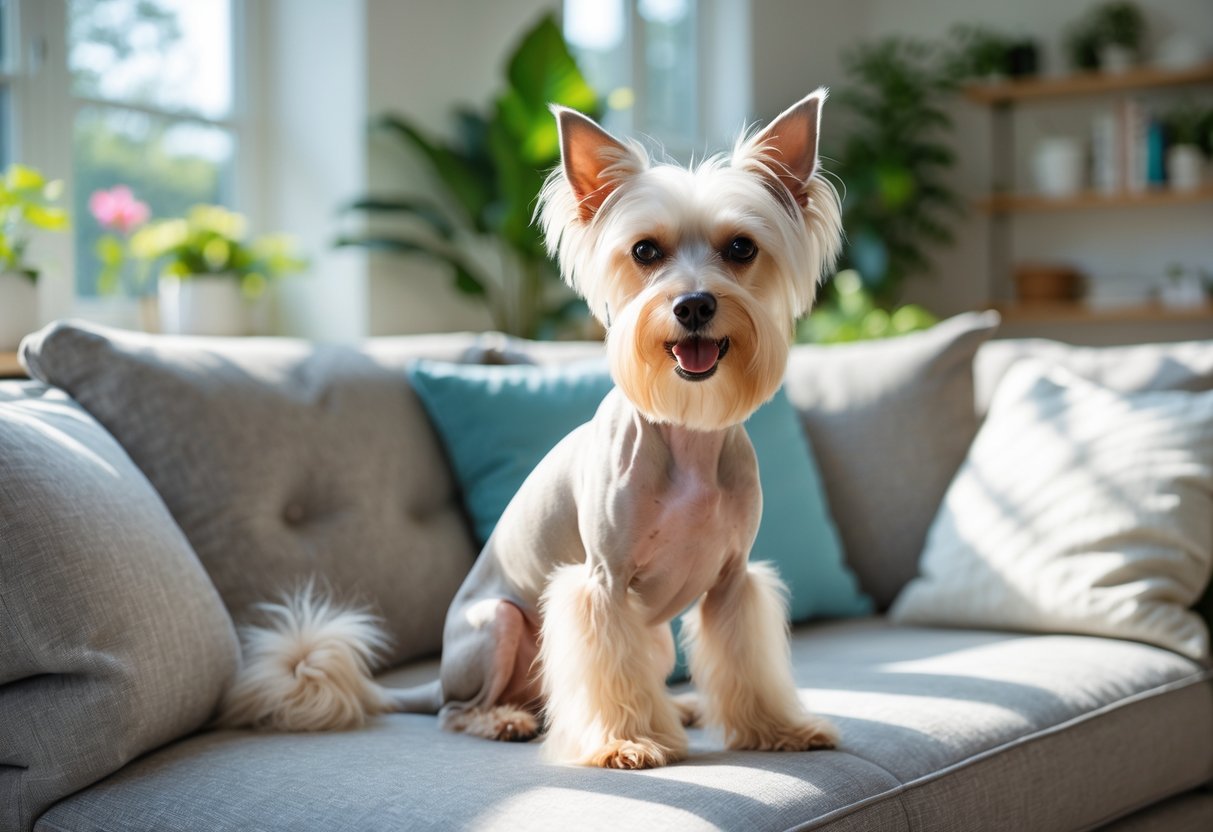
The Chinese Crested is a small dog that fits well into different living situations. Its unique grooming needs and personality make specific care and attention important. Daily life with this breed requires some planning to keep it comfortable and happy.
Adaptability to Homes and Lifestyles
Chinese Crested dogs adjust well to both apartments and larger homes. Their small size means they don’t need a lot of space to move around, so they thrive in cozy urban flats as well as houses with yards. Regular, moderate exercise is enough to meet their energy needs.
The Hairless variety requires extra skin care to avoid irritation, especially in dry or cold environments. Owners often need to use moisturizing lotions and protect their dog from extreme weather. The Powderpuff variety needs regular brushing but adapts easily to grooming routines.
This breed prefers spending time indoors with their family. It does not do well left alone for long periods and may develop anxiety if isolated.
Ideal Owners and Environments
Chinese Crested dogs suit owners who can offer daily attention and gentle care. They do best with people who understand their skin and grooming needs. Ideal owners are patient, consistent, and enjoy a small dog with a lively, sometimes stubborn, personality.
Families with older children or singles who want a companion dog tend to fit this breed well. They require an environment where temperature control is possible, avoiding harsh cold or sun exposure for the Hairless type.
Because they are sensitive, noisy or chaotic homes may cause stress. Calm, stable environments help them relax and thrive.
| Trait | Ideal Situation |
|---|---|
| Size | Small living spaces |
| Grooming Needs | Regular skin care or brushing |
| Attention Required | Daily companionship |
| Best Owner Type | Patient, attentive, calm homes |
Breed Recognition and Popularity
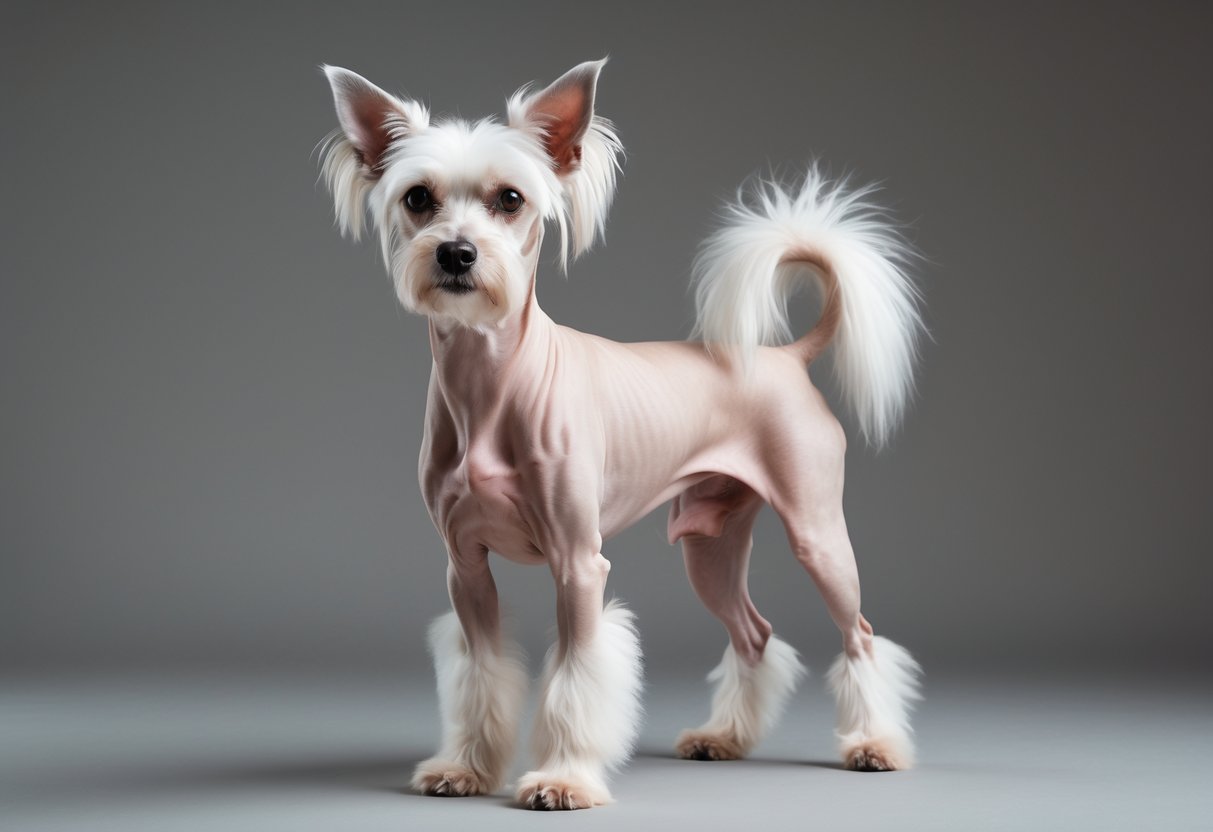
The Chinese Crested dog breed has achieved official recognition and steadily increased in popularity over time. Its unique look and personality helped it gain attention among dog fanciers and breed clubs globally.
Club and Registry Status
The American Kennel Club (AKC) officially recognized the Chinese Crested dog breed in 1991. This recognition came after the breed had been known in the United States since the late 1800s, with a brief popularity surge then. Later, the breed regained attention during the 1970s and solidified its place in the dog world through AKC registration.
Other major registries, including the United Kennel Club (UKC), also recognize the breed. These organizations set breed standards that define its appearance and traits, such as the two accepted varieties: Hairless and Powderpuff. The breed participates in conformation shows, agility, and other canine sports, reflecting growing respect and interest.
Notable Breed Advocates
Several individuals helped promote the Chinese Crested dog breed in the West. One early advocate was Ida Garrett, a journalist who wrote about the breed in the 1800s. Her work brought awareness to the unique qualities of the Chinese Crested, encouraging more people to consider it as a companion.
Another key figure was Gypsy Rose Lee, a famous entertainer from the mid-1900s, who owned and championed the breed. She helped increase public interest during the breed’s mid-20th-century resurgence. These advocates contributed to the breed’s rise in popularity and acceptance among dog lovers.
Frequently Asked Questions
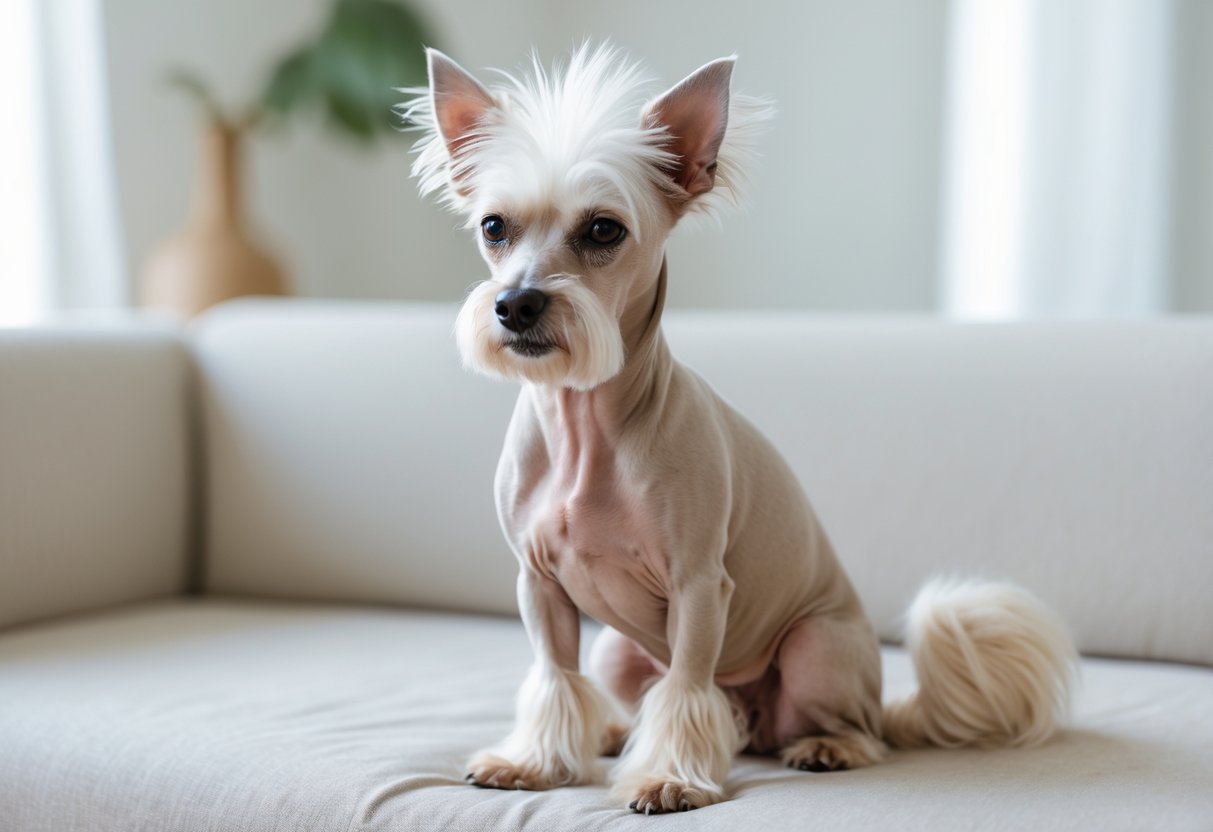
This breed’s cost varies based on factors like lineage and location. Their grooming needs differ between the two types. They have a friendly temperament but need gentle handling. Differences between Hairless and Powderpuff types involve coat and skin care. Potential owners should consider health, training, and social needs before adoption.
What is the average cost of a Chinese Crested dog?
The cost of a Chinese Crested dog typically ranges from $800 to $2,500. Prices vary depending on breeder reputation, pedigree, and whether the dog is show-quality or a pet.
Are Chinese Crested dogs hypoallergenic?
Chinese Cresteds are often considered hypoallergenic. Their minimal shedding means they produce fewer allergens, but reactions can still happen in sensitive individuals.
What are the grooming requirements for a Chinese Crested?
Hairless Chinese Cresteds need regular skin care, including bathing and sunscreen to avoid sunburn. Powderpuffs require daily brushing to prevent mats and regular grooming to keep their coat clean.
What is the temperament and personality of the Chinese Crested breed?
They are affectionate, playful, and loyal dogs. They bond closely with owners but can be shy around strangers and dislike rough handling. They also do well with other pets if socialized properly.
How do Chinese Crested Powder Puffs differ from Hairless Chinese Cresteds?
Hairless Cresteds have smooth skin with hair only on the head, tail tip, and feet. Powderpuffs are covered with a soft, full coat of hair, requiring more grooming. Both types can appear in the same litter.
What should potential owners consider before getting a Chinese Crested puppy?
Owners should be prepared for consistent training and socialization. They need regular grooming, skin protection, and a gentle environment. This breed thrives on companionship and does not do well with neglect or harsh treatment.
